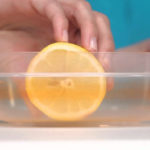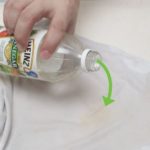Ngao is one of the most popular seafood types because it can be used to make many delicious dishes. Clams contain protein, lipids, carbohydrates, calcium, iron, phosphorus, vitamin A, B1, B2, PP…
In 1,000 grams of dried clams, there are 2,400 micrograms of iodine, which is very good for your health. Clams can be used to make soup, boiled, steamed, grilled, stir-fried, and cooked porridge… each way of cooking clams brings a unique and enticing flavor that not every seafood can achieve.
However, clams bought from the market often have a lot of sand, even sticky mud inside that is not easy to remove. If not properly processed, clams cannot be eaten.
Therefore, chefs and housewives should not worry too much. There are many ways to help clams release the sand without much effort. Let’s refer to the following methods to ensure that clam dishes are always clean, delicious, and perfect.

1. Cleaning clams with warm water
After buying clams, put them in a basin and pour enough warm water, about 50 degrees Celsius, to soak the clams for about 10 minutes. The soaking water will become cloudy, then rinse the clams with clean water. The clams’ shells will react in a high-temperature environment, accelerating the shell opening and sand release process.
Therefore, cleaning clams with warm water can speed up the sand release process, and it only takes about 10 minutes for the clams to release all the sand. Just pay attention to the water temperature, if it is too high, the clams will be burnt and cooked. With warm water around 50 degrees Celsius, when you touch it, it should feel slightly hot, which is suitable for soaking clams.
2. Cleaning clams with saltwater
Prepare a basin of water and soak the clams in it. Add a little salt. This saltwater will quickly accelerate the clams’ sand release process. The saltwater can create a similar environment to the clams’ natural habitat, maintaining their activity and promoting sand release inside. In general, a properly-sized basin should be mixed with about 20g of salt. Soak the clams for about 2 hours, then rinse them thoroughly. The water should be changed once in between.

3. Cleaning clams with sesame oil
Prepare a basin of water and soak the clams in it. Add a few drops of sesame oil. Sesame oil can help clean the clams and speed up the sand release process.
The chef explains that sesame oil can create a protective film on the water surface, reducing the amount of dissolved oxygen. As a result, it stimulates the clams to release sand more frequently and opens their shells. After adding the sesame oil, soak the clams for 2 hours, then rinse them thoroughly. Note that the water should be changed once in between.

4. Cleaning clams with vinegar
Adding vinegar to the soaking water will stimulate the clams to a certain extent, making the clams open their mouths and speeding up the sand release process. Soak the clams for 2-3 hours, then rinse them thoroughly before cooking dishes such as steamed clams, Thai-style clams…
Wishing you success with this clam cleaning method!
According to Thời báo văn học nghệ thuật (Literature and Arts Newspaper)
- Soak clams in warm water (around 50°C) for about 10 minutes. The warm temperature accelerates shell opening and sand release.
- Use saltwater by adding a little salt to the water. This mimics their natural habitat, promoting sand release. Soak for about 2 hours.
- Add a few drops of sesame oil to the water. This creates a protective film, reducing oxygen and stimulating clams to release sand. Soak for 2 hours.
- For an alternative approach, use vinegar in the soaking water to stimulate the clams and expedite sand release. Soak for 2-3 hours before thoroughly rinsing.
Discovering Unusual Ways to Utilize Salt
Table salt: a staple for the kitchen table, and a surprisingly powerful and versatile tool for cleaning, preserving and more! From preventing the discoloration of vegetables to repelling termites to deodorizing shoes, the uses of salt extend far beyond the kitchen.






































